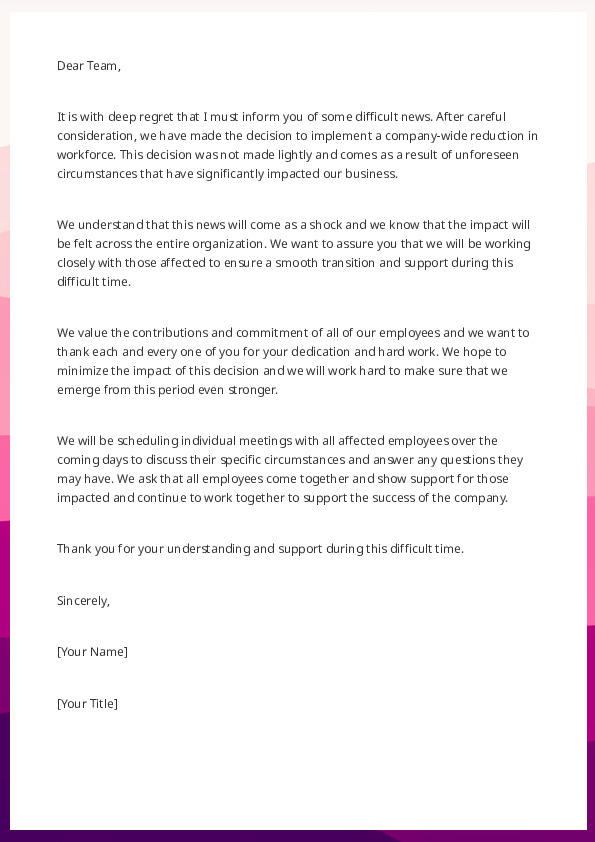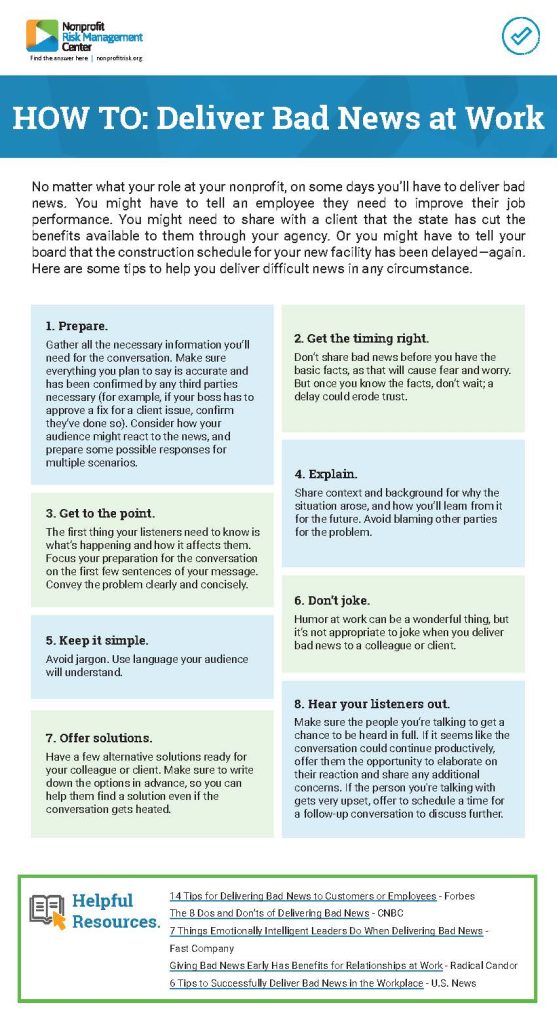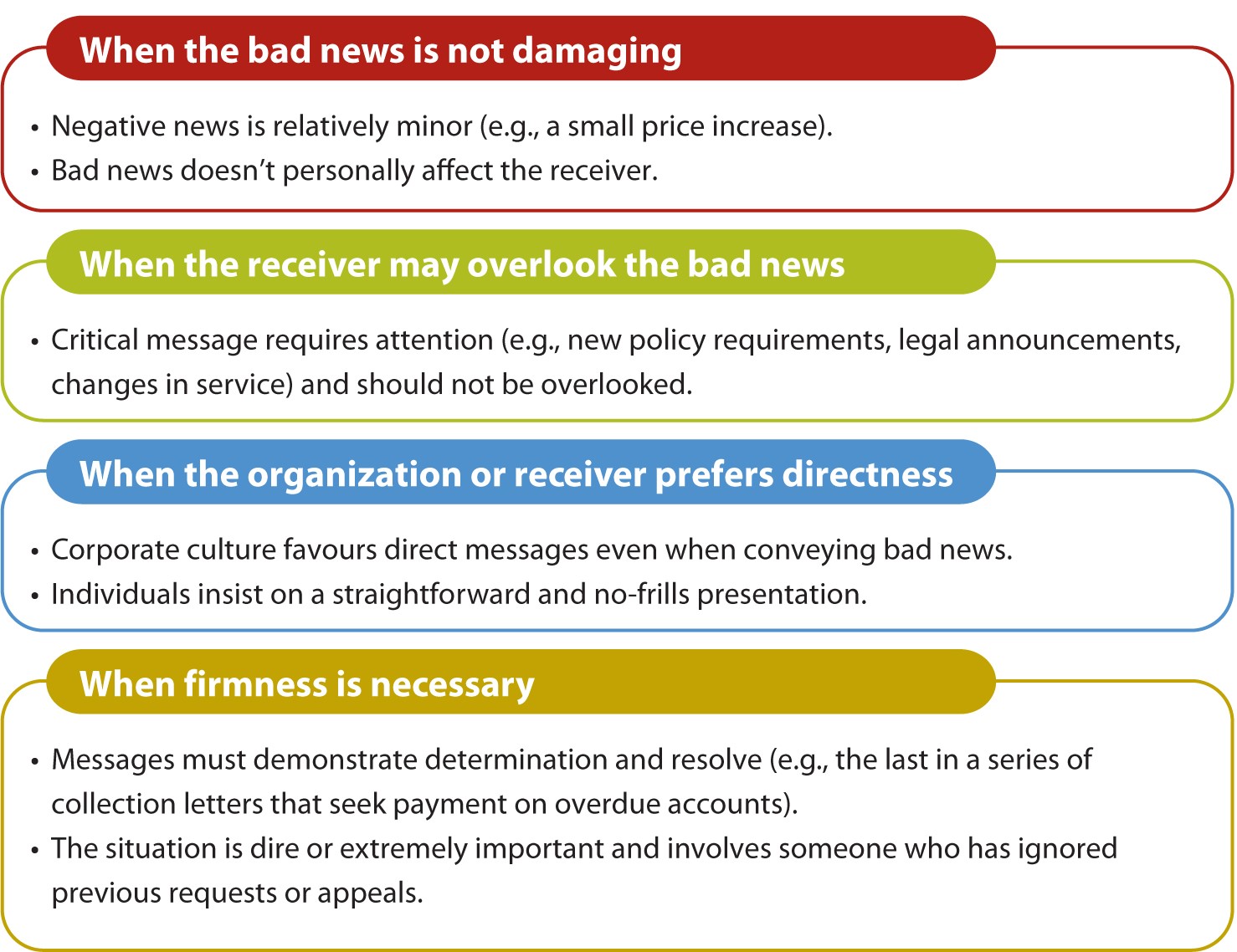How To Communicate Bad News To Employees

The air in the office crackled with an unspoken tension. Whispers bounced off cubicle walls, fueled by rumors of restructuring. Sarah, a team lead, felt a knot of anxiety tighten in her stomach as she prepared to deliver news no one wanted to hear – layoffs were imminent. The challenge wasn't just delivering the message, but doing so with empathy, respect, and a commitment to preserving the dignity of those affected.
Effectively communicating bad news to employees is a crucial leadership skill, especially during times of economic uncertainty or organizational change. Transparency, empathy, and a clear plan of action are essential to mitigating the negative impact and maintaining trust.
Understanding the Importance of Sensitive Communication
Delivering difficult news poorly can have devastating consequences. Morale can plummet, productivity suffers, and the organization's reputation can be severely damaged. According to a 2023 study by the Society for Human Resource Management (SHRM), employees who feel they are treated with respect during times of change are more likely to remain engaged and committed to the company's future.
Conversely, handling bad news with compassion and honesty can strengthen employee loyalty and build resilience. It's about acknowledging the impact of the news and demonstrating genuine concern for those affected.
Preparing for the Conversation
Before delivering any bad news, it's crucial to prepare thoroughly. This involves gathering all relevant information, anticipating potential questions, and developing a clear, concise message. Practicing the delivery can help manage emotions and ensure the message is conveyed effectively.
Ensure that you have the necessary resources and support systems in place for those affected, such as severance packages, outplacement services, and employee assistance programs. Being prepared demonstrates a commitment to supporting employees through the transition.
Key Strategies for Delivering Bad News
Be direct and honest. Avoid sugarcoating the situation or using euphemisms. Clearly state the news and the reasons behind it.
Choose the right setting. A private, one-on-one conversation is often the most respectful way to deliver difficult news, especially when it involves job loss. Allow ample time for questions and discussion.
Show empathy and compassion. Acknowledge the emotional impact of the news and validate employees' feelings. Listen actively and offer support. Avoid clichés or dismissive statements.
Provide a clear explanation of the next steps. Outline the timeline, benefits information, and available resources. Be transparent about the company's plans for the future.
Follow up and provide ongoing support. Check in with affected employees to see how they are doing and offer additional assistance. Maintain open lines of communication.
"The way you communicate during difficult times defines your leadership. It's not just about delivering the message, it's about demonstrating your values." - Expert HR Consultant, Dr. Emily Carter
The Role of Leadership
Leadership plays a critical role in setting the tone for how bad news is received and processed within an organization. When leaders demonstrate transparency, empathy, and accountability, they can foster a culture of trust and resilience.
Open communication from leadership is essential to dispel rumors and manage anxiety. Regular updates, even when there is no new information to share, can help maintain employee confidence.
Maintaining Morale and Productivity
Even after delivering difficult news, it's important to focus on maintaining morale and productivity. Communicate a clear vision for the future and highlight opportunities for growth and development. Recognize and reward employee contributions.
Encourage teamwork and collaboration. Creating a supportive work environment can help employees cope with stress and maintain a sense of purpose. Invest in employee well-being programs.
Delivering bad news is never easy, but it is an inevitable part of leadership. By approaching these conversations with empathy, honesty, and a commitment to supporting employees, leaders can minimize the negative impact and build a more resilient organization.
As Sarah began her first difficult conversation, she reminded herself that her role was not just to deliver the news, but to provide support and guidance during a challenging time. She took a deep breath and began, "Thank you for meeting with me. I have some difficult news to share..."












![How To Communicate Bad News To Employees How To Communicate Bad News to Employees [Feat. Expert-Tested Tips]](https://www.workvivo.com/uploads/pt-br/Emp_Ex_vs_Emp_Eng_2048x1024_3b50cba7ab.webp)

![How To Communicate Bad News To Employees How To Communicate Bad News to Employees [Feat. Expert-Tested Tips]](https://d211y6xvvkc8ha.cloudfront.net/uploads/medium_Emp_Ex_vs_Emp_Eng2_e3d795a563.png)



